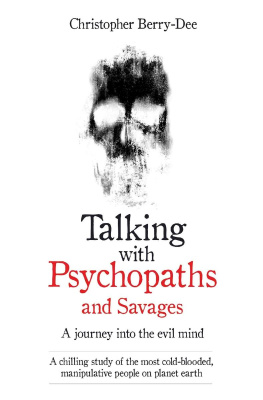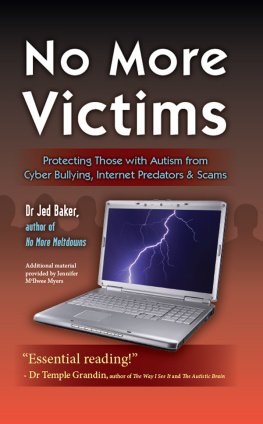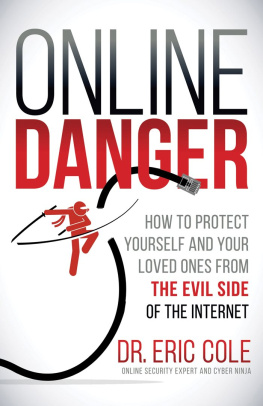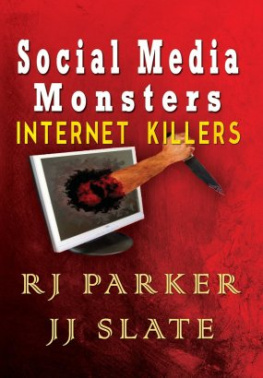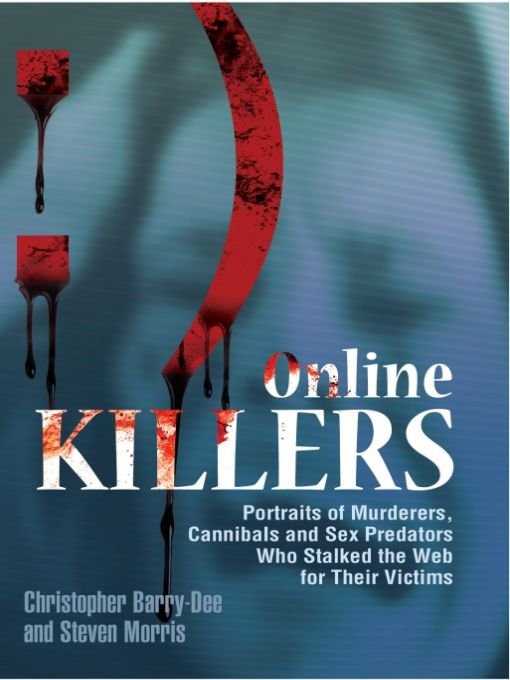Table of Contents
In memoriam Jane Longhurst
Introduction
The attraction of the internet to so many people is you can be whoever or whatever you want to be. If you want to be Walter Mitty, you can be Walter Mitty. If you want to be out of the mainstream sexually, you can find company on the internet.
PAUL JONES, INSTITUTE FOR ADVANCED TECHNOLOGY IN THE HUMANITIES, UNIVERSITY OF VIRGINIA
In April 2009, newspapers and TV news shows around the world reported that police had arrested the suspected murderer of Julissa Brisman, a 26-year-old masseuse from New York, who was shot to death and robbed in a posh Boston hotel. There was reason to believe that the murder was related to assaults on two other women in New England hotels over the past 18 days.
Serial murders of sex workers are nothing new, of course. Jack the Ripper became notorious for such crimes in Victorian-era London, and Ted Bundy achieved worldwide infamy by confessing to 30 murders of young women from Washington state to Florida in the 1970s. But the Boston killing of Ms. Brisman captured media attention because of a startling difference: the perpetrator had met all his victims via an online classified advertising sitea concept that neither the Ripper nor Bundy could possibly have imagined. While few readers may recall the name of this defendant (whom we will not identify here because his trial remains pending), his news media nom de guerre, the Craigslist Killer, has become a household phrase.
Reports of the Craigslist killings alerted many people for the first time of the very real evils that had been lurking in cyberspace for some time. The case heightened public awareness that cybercrime involved much more than phishing for bank account and social security data. Suddenly, the world realized that standard and seemingly harmless chat rooms, social networks and dating agencies could be alligator-infested cyber-swamps populated by real live rapists, homicidal maniacs and worse. Whats worse than a homicidal maniac, you may well ask? Well, how about a cannibal who delights in sharing his victims cooked flesh with... his victim. Youre about to meet him. Read on!
In fact, the Craigslist Killer was not the first or only murderer to be so labeled by the news media. Since October 2007, when the monicker was first used as a nickname for a murder defendant by the Saint Paul Pioneer Press, at least seven other Craigslist Killers have been convicted in the United States. It may be that the term suddenly caught on only in the 2009 Boston homicide because we, the public, have lately come to realize that this and other violent cybercrime problems have grown so widespread that we need new words to discuss the unspeakable.
Cybercrime in all its manifestations is oftenand no doubt accuratelysaid to be the fastest-growing field of criminal enterprise throughout the world. Besides the all-too-familiar fraud and identity theft schemes flooding from internet bases in some African and Eastern European nations where internet law enforcement is either lax or complicit, crimes that are increasingly aided, abetted and enabled by internet access include: classic confidence games such as Ponzi, Spanish prisoner and lonely heart scams; homicide in its diverse manifestations; assisted suicide and pact suicide; human corpse abuse; sex slavery; suicide bombing and other terrorist acts. Imprisoned convicts are continually devising original ways of soliciting money and sympathy from behind prison walls. Hate groups ranging from Al Qaeda to the Ku Klux Klan and Aryan Nation have found the internet to be by far the most effective means for recruiting like-minded would-be terrorists worldwide. And then there is what many experts believe to be the most all-pervasive and corrosive of all computer-based crimeschild pornography. Deemed to be so heinous that even in countries like the U.S., where garden-variety hardcore sex tapes are protected by the First Amendments Freedom of Speech clause, the justice system treats kiddie porn along with torture, snuff and necrophilia images, as beyond the pale. Yet all are just a mouse-click away from almost any place in the world.
Cyberspace is a strange place, full of both happy and spine-chilling surprises. For instance, there were certainly some unpleasant surprises in store for luckless 28-year-old Trevor Tasker. This Englishman from North Yorkshire has understandably given up using the internet since discovering his new love was a 65-year-old pensioner with a corpse in her freezer.
After meeting her in a chat room, the excited Trevor flew to South Carolina to meet Wynema Faye Shumate, who had posed as a sexy 30-something on the web. After hooking him with sexy chat, she had reeled him in with a semi-nude photo. Unbeknownst to her suitor, however, the shot had been taken some 30 years earlier.
Trevors shock on first setting eyes on his prospective lover turned to abject horror when he discovered that Wynema had put her dead housemate in the freezer. She had kept Jim ONeil, who had died of natural causes, in cold storage for a year while she lived in his house and spent his money.
Sweet Wynema had also lopped off one of Jims legs with an axe because, somewhat inconveniently, he was too big to fit into the freezer. For the record, Shumate pleaded guilty to fraud and the unlawful removal of a dead body, and was given a year in prison.
Back home with his mom afterward, Trevor told the Daily Mirror newspaper, Ill never log on again. When I saw her picture, I thought, Wow, but when she met me at the airport I almost had a heart attack. I certainly wont go near internet chat rooms again.
Well done, Trevor!
And there is a considerably more serious side to our Introduction.
On March 9, 2004, a chilly Tuesday, the BBC reported that Britain and the U.S. were setting up a group to investigate ways of closing down internet sites depicting violent sex.
Initial steps have now been agreed by the Home Secretary David Blunkett and U.S. Deputy Attorney General Jim Comey, during a meeting at the U.S. Department of Justice in Washington DC, claimed the feature, adding, The Jane Longhurst murder case had horrified American officials because websites featuring extreme sexual acts were implicated in the trial of Englishman Graham Coutts, who had murdered the Brighton teacher.
The sexual deviant Coutts trawled the webthere are more than 80,000 sites dedicated to snuff and other killings, cannibalism, necrophilia and rapeand then carried out his horrendous fantasy in real life by murdering Jane. The internet-inspired monster kept his victims body in a garden shed for 11 days before moving her to a storage facility, where he committed necrophiliac acts on the corpse.
A senior detective from the National Criminal Intelligence Service (NCIS) told Christopher Berry-Dee, who visited New Scotland Yard in 2003, In a short period of time, the internet has become the most exploited instrument of perversion known to man. It is like pumping raw sewage into peoples homes.
Also very much to the point is the view of Ron P. Hawley, head of the North Carolina State Bureau of Investigation division that probes computer crimes: It used to be you were limited by geography and transportation. The internet broadens the potential for contact. Its another place to hang out for people predisposed to commit a crime.




